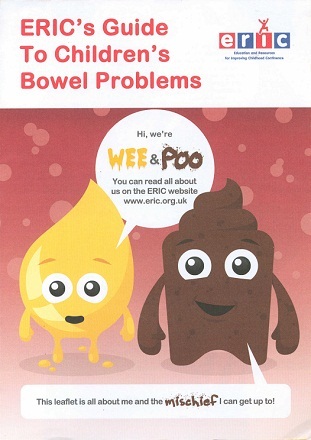Digestive issues in Children – a guest article by by Abby Ixer, RD
Your child’s digestive system is a complex system that turns food into the energy their body needs to develop and grow. Effective digestion is key to good health. Throughout a child’s life, the gut is exposed to outside factors which may cause unpleasant side effects, such as diarrhoea or constipation. These can often be worrying for parents, but are often harmless and can be treated effectively. This article aims to summarise the main things to consider if your child is suffering with digestive problems and how to treat some of the more common ones.
Constipation
Constipation is surprisingly common in children, with roughly one third suffering at any one time. Constipation can usually be managed at home through diet and lifestyle changes.
How to spot signs of constipation?
Your child may be constipated if:
- They don’t pass stools more than three times a week.
- Their stools are often large or very firm.
- Their stools look like ‘rabbit droppings’ or small pellets.
- They suffer from loss of appetite.
- They lack energy.
- They suffer stomach pain or discomfort.
- They seem irritable or generally unhappy.
How to prevent and treat constipation:
If you suspect that your child might be suffering with constipation, it is always best to take them to your family doctor to rule out anything more serious. It is essential to get advice early, as the longer it goes on for the more difficult it is for bowel habits to return to normal. Diet and lifestyle changes are usually the first treatment for constipation, but it might take a while for these changes have a significant effect, so it is important to be patient.
Ensure adequate fluid intake. Encourage regular sips of water throughout the day.
- Ensure that your child is given a varied diet to include plenty of fibre. Fibre rich foods include fruits and vegetables, wholegrain products such as bread and cereals, oats, seeds, beans and pulses. It is best to introduce fibre slowly and in small quantities to avoid nasty gut side effects. Be aware that wholegrain foods are not suitable for children under two years of age, as they tend to fill them up before they have consumed enough calories. Avoid giving children under five solely wholegrain products alone, so include a mixture of different types. For young children, try giving pureed apple as a dessert or chopped strawberries as a snack.
- Avoid over feeding. Children who are fed too much are more likely to suffer with constipation, especially if they don’t get enough fluid. Ensure portion sizes are appropriate for their age. For more information about portion sizes for child, see the ‘Useful Links’ section.
- Encourage your child to take part in gentle exercise and remain active.
- Try to remain calm and reassuring. Avoid creating a stressful toilet environment and give them enough time so that your child doesn’t feel anxious about going to the toilet.
What about babies?
For babies who haven’t started to eat solid foods, give them extra water in between their normal feeds. If your baby is eating solid foods, make sure they drink plenty of water or diluted fruit juice in between meals. Try to include small amounts of fruit as well. This can be chopped or pureed depending on their stage of weaning. To help encourage bowel movements, you can also try gently massaging their stomach.
When should I be concerned?
If you are concerned, it is always advised to speak to a GP for further guidance. If you notice any of the following, you should see a GP urgently.
- Bleeding from the back passage or in stools.
- Persistent tiredness.
- Unexplained weight loss.
- Other gut symptoms such as intermittent diarrhoea or vomiting.
Diarrhoea
Diarrhoea can be unpleasant and uncomfortable for children, although in most cases there is nothing to worry about. It usually affects most children at some stage of life and can usually be treated at home without the need for medical intervention.
How to prevent and treat diarrhoea?
- Ensure adequate fluid intake. Diarrhoea can lead to dehydration, so it is essential to replace any lost fluid as soon as possible. It is often more effective to give smaller amounts of fluid more frequently. Avoid fruit juice or fizzy drinks as these can often make symptoms worse. Encourage your child to take regular sips of water throughout the day.
- If your child is dehydrated, consider giving them an oral rehydration solution. This can help to replace lost fluid and nutrients. It is usually advised to give this to your child after each bout of diarrhoea. Speak to a GP or pharmacist before using these to ensure the correct dose is given.
- Make sure they get plenty of rest.
- Anti-diarrhoea medications are not usually necessary and most types are not suitable for children.
When should I be concerned?
Usually, diarrhoea will clear up by itself within five to seven days. However, if your child has any of the following, you should speak to a GP straight away.
- More than six episodes of diarrhoea in the past 24 hours.
- Persistent diarrhoea lasting more than seven days.
- Symptoms of dehydration. These include dizziness, dry mouth, cold or blotchy hands, dark coloured urine or low urine output.
- Blood in stools or from the back passage.
- Very watery stools.
- Severe stomach pains.
Tips for children with a stomach bug
- Encourage your child to start eating solid food as soon as they are able to. Start with small amounts of plain food, such as bread, soup, pasta or potato. For babies, continue to feed as normal.
- The priority for a child with a stomach bug is to prevent dehydration, so avoid giving them any solid food until they have drunk enough fluids. Once they stop showing signs of dehydration, they can resume a normal diet again. If they do not feel like eating, continue to give them plenty of fluids and wait until their appetite returns.
What about probiotics?
Probiotics are live bacteria, usually described as ‘good’ or ‘friendly’ bacteria. They are often added to yoghurts and are thought to help restore the natural balance of bacteria in the gut. Probiotics may be beneficial in some cases, for example there is fairly good research to support the use of probiotics for children whilst taking antibiotics. Antibiotics can reduce the amount of friendly bacteria in the gut, causing adverse side effects including diarrhoea and bloating. Taking probiotics may help to replace the bacteria lost as a result of antibiotic use. More research is needed to support the claimed benefits of probiotics, as it appears that people respond differently to different strains of bacteria and the evidence is not strong enough yet to recommend them as a treatment.
Summary: general tips for good digestive health
- Ensure adequate fibre intake to prevent constipation. Try adding beans to soups or stews or give your child vegetables sticks with hummus as a snack. A great way of boosting fibre at breakfast is to mix a high fibre cereal with your child’s favourite, choose wholegrain options where possible and try to keep skins on potatoes.
- Eat plenty of fruits and vegetables. Aim for 5 portions a day, but always start small and build up gradually. As a general guide, one portion is roughly the size of your child’s fist. Try adding a small handful of dried fruit to porridge or add a few cherry tomatoes to their lunchbox. For older children, keep pre-prepared fruits and vegetables in the fridge, such as pre-chopped fruit salad or chopped celery for a snack. For fussy eaters, hide chopped vegetables in pasta dishes. The Change4Lfie website provides other useful tips for boosting fruit and vegetable intake (link below).
- Ensure adequate fluid intake. Water is best, but diluted sugar free squash is also an option.
- Avoid caffeinated drinks. Caffeine can have a laxative effect, so avoid giving to your child in large amounts. The obvious sources are tea and coffee, but also be aware that fizzy drinks often contain large amounts of caffeine.
- Ensure that your child eats regular meals and encourage them to eat slowly at meal times to avoid swallowing excess air, which can cause gas and bloating.
- Give your child small portions to prevent overeating, which can cause bloating or wind.
- Avoid fatty, rich or spicy foods, as these can irritate the gut.
- Keep a food and symptom diary. This can help to identify trigger foods that may cause nasty gut symptoms.
- Follow general healthy eating guidelines. The Eatwell guide gives detailed advice about how to implement a healthy, balanced diet (see link below).
- Monitor any changes in your child’s stools and seek advice from a GP if there are any unusual changes, such as an unpleasant odour, blood, a greasy texture, pale colour or any change in consistency or frequency of bowel movements.
Useful Links and References
NHS - Eatwell Guide
http://www.nhs.uk/Livewell/Goodfood/Pages/the-eatwell-guide.aspx
Change4Life – Tips to reach 5 a day
http://www.nhs.uk/Change4Life/Pages/five-a-day.aspx
Start4Life
British Nutrition Foundation (Portion size guide for toddlers)
https://www.nutrition.org.uk/attachments/article/734/BNF%20Toddler%20Eatwell%20Leaflet_OL.pdf
NHS Choices
http://www.nhs.uk/pages/home.aspx
Caroline Walker Trust – Eating well for 1-4 year olds
https://www.cwt.org.uk/wp-content/uploads/2015/02/CHEW-1-4YearsPracticalGuide3rd-Edition.pdf
British Dietetic Association – Healthy Eating for Children Fact Sheet
https://www.bda.uk.com/foodfacts/healthyeatingchildren.pdf
British Dietetic Association – Fibre Fact Sheet
https://www.bda.uk.com/foodfacts/fibrefoodfactsheet.pdf
Additional resources:
Make sure your child can rest their feet flat on the floor or a step when they're using the potty or toilet, to get them in a good position for pooing. ERIC, The Children's Bowel & Bladder Charity's leaflet, Children’s Bowel Problems (PDF, 2.48Mb) shows this position.
Want to test your knowledge of family nutrition? Take our 10 question test to find out how much you know and how we can help you fill the gaps!





